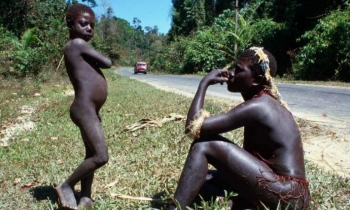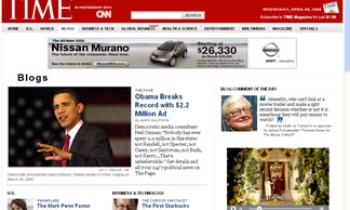Believe it or not, women are still fighting to get their opinions in print and on the air–and editors are still making lame excuses.
In March, FOX News’ Susan Estrich scolded the Los Angeles Times, where less than 20 percent of opinion-editorial columns in a nine-week period were written by women, by firing off a series of emails to op-ed page editor Michael Kinsley. He responded by saying that "pressure for more women" writers could drive blacks and Latinos off the page.
"There may even be a wonderfully articulate disabled Latina lesbian conservative who is undiscovered because she is outside the comfortable old-boy network. But there probably aren’t two," Kinsley quipped in his column. Few women laughed.
Then Fairness & Accuracy In Reporting (FAIR) jumped into the fray, with data from a study of Jan. and Feb. 2005 showing the Times wasn’t alone in its dearth of women pundits: Women constitute only 17 percent of opinion writers at The New York Times, 10 percent at The Washington Post, 28 percent at U.S. News & World Report, 23 percent at Newsweek and 13 percent at Time. Overall, only 24 percent of nationally syndicated columnists are women, FAIR’s Janine Jackson told a Women and the Media conference in Cambridge in March, and they tend to be white and right-wing. A notable exception is United Features newspaper syndicate, half of whose columnists are women.
Editor Gail Collins of The New York Times op-ed section offered a shocking rationale for her paper’s lack of gender diversity: "There are probably fewer women who feel comfortable writing very straight opinion stuff hearing something on the news and batting something out."
There are "brilliant women," offered Maureen Dowd–the only woman among eight op-ed columnists at The Times. "We just need to find and nur-ture them." To which The Nation’s Katha Pollitt retorted: "Oh, nurture my eye," dashing off a list of names of 13 easy-to-find women who would make great op-ed columnists, and adding her own for good measure.
FAIR also looked at women’s participation on the Sunday-morning political talk shows (all hosted by men) where, surprisingly, NBC’s Chris Matthews achieved near-gender equity, with 49 percent women pundits and panelists for the six months ending Feb. 28. If Matthews can do it, why can’t Meet the
Press, Fox News Sunday or ABC’s This Week (39 percent, 25 percent and 22 percent women, respectively)?
The picture looks similarly grim for women who review books, according to two researchers who studied the influential New York Times Book Review for 53 weeks in 2002 and 2003. Look-ing at reviews of 807 books, Mary Ann Palko and Paula J. Caplan found there were twice as many male reviewers as female–a clear "imbalance of influence," Gloria Steinem commented to them, and "all the more bizarre, since women purchase the majority of books."
Review editor Charles McGrath brushed aside suggestions for recruiting women reviewers, stating: "Our standards are so high that [a] great many writers-even published writers-don’t meet them." McGrath left the Review in 2004 and was replaced by Sam Tanenhaus, to whom Caplan and Palko presented their latest find-ings, hoping for a warmer reception.
"Many thanks for this," he replied in a terse email. "We feature many women reviewers in our pages and will continue to do so. But we don’t tally the numbers or ratios and think it would be a mistake to do so."
It’s also a mistake to leave out women’s opinions and voices. The media can do better, and maybe this latest brouhaha will at least embarrass some publications–if not spur them to change.









